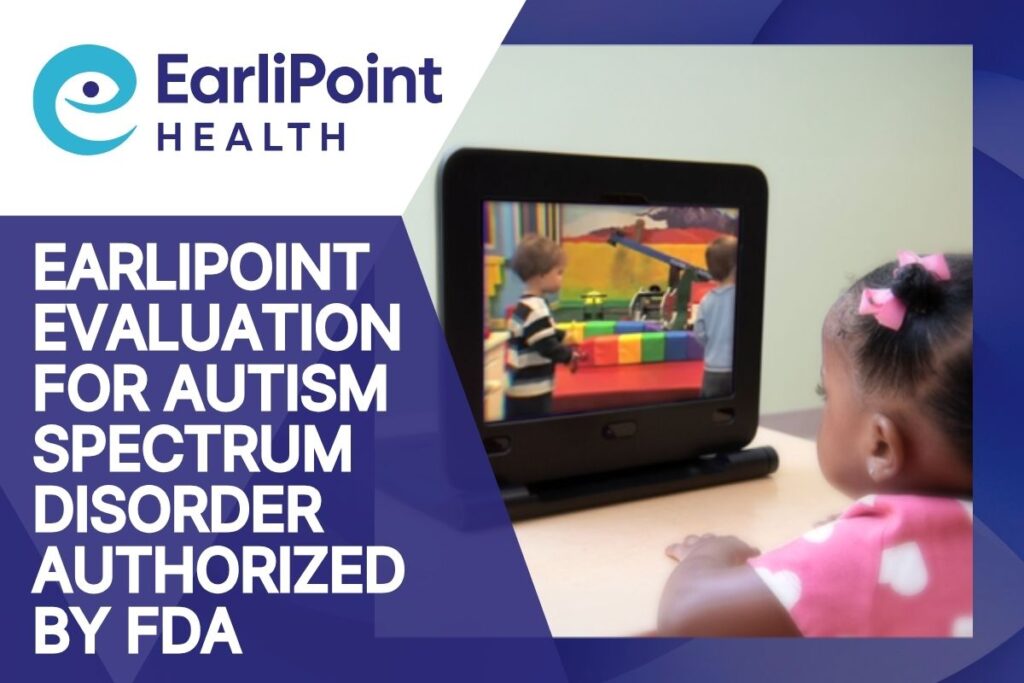Every year, thousands of children miss critical windows for early autism intervention—simply because diagnostic tools rely too much on subjective observation.20,31-37 Once that window closes, the opportunity for optimal neurodevelopment is lost affecting a child’s future learning, communication, and independence.33,34, 38-40,3
As healthcare providers working with children under five years of age, your assessments and decisions can significantly impact these young lives. While clinical observation remains foundational to pediatric care, emerging research demonstrates that incorporating objective measurement tools has potential to enhance diagnostic accuracy and intervention effectiveness.31-33,35,36,38,39,41 This article explores the critical importance of objective data in understanding and supporting learning development in young children.
The Critical Window: Early Detection and Intervention
Research consistently demonstrates that early intervention in autism and other developmental delays yields substantial benefits. A 2021 study published in the Journal of Autism and Developmental Disorders found that autism diagnosis before age 2.5 is associated with considerable improvement in social symptoms, with approximately 65% of children diagnosed before 2.5 years showing improvements in Autism Diagnostic Observation Schedule scores, compared to only 23% of children diagnosed after this age.38 The impact of this early intervention window cannot be overstated.
The evidence supporting early intervention continues to grow stronger. A comprehensive meta-analysis in 2019 evaluated 130 studies involving 6,240 participants aged 0-8 years, finding positive effects for behavioral, developmental, and naturalistic developmental behavioral interventions.41 The Early Start Denver Model (ESDM) for toddlers with autism demonstrated significant improvements in IQ, language ability, and social interaction, with children receiving ESDM showing an average 18-point IQ improvement compared to 4 points in the control group.42
Despite this evidence, the reality remains troubling: autism is typically diagnosed only after children are four and a half years old, missing crucial years of intervention opportunity. This diagnostic delay represents a significant gap between our understanding of best practices and their implementation.
The Limitations of Traditional Assessment Methods
Traditional autism diagnosis typically involves hours of behavioral observation, child and parent interviews, and standardized assessments.5,6 While these methods have proven valuable, they come with inherent limitations:
Subjectivity: Assessments based on behavioral observations inevitably introduce elements of subjective interpretation, potentially varying between clinicians. ADOS-2 and CARS-2 have been foundational in autism diagnosis. However, their reliance on clinician interpretation introduces variability and potential bias. Studies show that ADOS-2 demonstrates inconsistencies based on demographics, cultural background, and clinical experience (Lord et al.,2012).7-9 Scoring discrepancies have been observed between different examiners, even when following the same assessment protocol (Gotham et al., 2007).10 Additionally, ADOS-2’s sensitivity and specificity fluctuate across different populations, with lower accuracy reported in community-based settings compared to controlled research environments.11,12
Similarly, CARS-2, designed to be more accessible in community settings, has its drawbacks. While easier to administer, it is less precise in distinguishing high-functioning autism from other developmental disorders.13,14 Research has found that the tool tends to over diagnose or underdiagnose ASD, depending on the experience level of the evaluator.15,16
- Time intensity: Traditional evaluations can be lengthy, creating bottlenecks in assessment processes and delaying intervention.
- Accessibility barriers: The complex nature of traditional assessments can limit accessibility, particularly for children from minority and low-income families who often face delays in diagnosis. 17-19
- Variable expertise: The quality of observational assessments may depend heavily on clinician experience and specialization.
These limitations highlight the need for more objective, efficient, and accessible assessment tools to complement traditional methods.
Advancements in Objective Assessment Technologies
Recent technological advancements have created promising new approaches to developmental assessment. The EarliPoint Evaluation represents one such innovation, using eye-tracking technology called Dynamic Quantification of Social-Visual Engagement (DQSVE) to capture a child’s moment-by-moment looking behavior at 120 times per second. 20,31,32 Rather than relying solely on observable behaviors, this approach measures how children look at and learn from their surrounding social environment. 20,31,32
The pivotal trial published in The Journal of the American Medical Association (JAMA) demonstrated the effectiveness of this approach, with the EarliPoint Evaluation showing an area under the receiver-operating characteristic curve of 0.90, sensitivity of 78.0%, and specificity of 85.4% in children aged 16 to 30 months. 20,31,32 Importantly, these objective measurements accurately predicted 74.1% of variance in social disability, 88.8% of verbal ability, and 77.9% of nonverbal cognitive ability. 20,31,32
Such objective data collection methods provide several key advantages:
- Quantifiable metrics: Objective measurements generate standardized, quantitative data that can be precisely tracked over time.
- Earlier detection capability: Tools like the EarliPoint Evaluation can assist in diagnosing autism in children as young as 16 months old, significantly earlier than traditional methods.20,31,32
- Reduced subjectivity: Quantitative measurements minimize the subjective interpretation inherent in observational assessments.
Enhancing Clinical Practice Through Objective Data
For healthcare providers, objective assessment tools offer powerful additions to your clinical toolkit. By incorporating quantitative measurements alongside traditional observations, you can:
- Improved Interactions – Research demonstrates that early intervention programs help children with ASD develop crucial social skills, leading to improved interactions with peers, family members, and the broader community. Objective tools can help identify which children would benefit from these interventions.
- Accelerate the intervention timeline – Earlier diagnosis enables earlier intervention. Children who receive early intervention are more likely to attend regular education classes and have higher rates of employment in adulthood. 24-26
- Personalize treatment approaches – Detailed assessment data enables the development of more personalized and targeted intervention strategies based on each child’s specific strengths and vulnerabilities.
- Monitor progress objectively – Quantitative measurements allow for precise tracking of progress over time, facilitating data-driven adjustments to intervention strategies.
- Enhance communication with families – Objective data can help communicate findings clearly to families, potentially increasing understanding and buy-in for intervention recommendations.
Long-Term Impact of Objective Assessment and Early Intervention
The benefits of combining objective assessment with early intervention extend far beyond immediate diagnostic clarity. Research indicates substantial long-term impacts:
Enhanced social skills development: Children receiving early intervention show marked improvements in social skills and adaptive behaviors when receiving early intervention. 1
Improved language development: Up to 90% of children receiving early intervention develop functional communication skills.27
Cognitive benefits: Early intensive therapy can result in an average 18-point increase in IQ scores compared to those who start later.3
Economic advantages: Early intervention is estimated to save approximately $1.3 million per child over their lifetime by reducing the need for long-term special education and intensive care.3,28
Family well-being: Early intervention helps families develop valuable support networks and reduces feelings of isolation.29,30
The Future of Early ASD Diagnosis: Leading pediatric ASD and IDD diagnosticians and children’s hospitals are already integrating objective eye-tracking tools like EarliPoint to improve diagnostic precision and accelerate early intervention. Don’t fall behind—your patients deserve the best.
Conclusion: The Future of Developmental Assessment
The landscape of developmental assessment is evolving rapidly, with objective measurement tools offering unprecedented insights into early learning and development. As healthcare providers on the front lines of pediatric care, you have the opportunity to leverage these advancements to identify developmental concerns earlier and with greater precision.
By embracing the complementary strengths of traditional clinical observation and cutting-edge objective assessment, you can help bridge the gap between our understanding of best practices and their implementation. Most importantly, you can help ensure that more children receive the early interventions that research consistently shows can transform developmental trajectories and life outcomes.
The evidence is clear: objective data is not just helpful—it’s essential for understanding learning and optimizing developmental outcomes for our youngest patients.
Your patients can’t afford to wait. Bring the most advanced autism assessment into your practice today—reducing diagnostic delays and improving outcomes.
Contact Us, today, to learn more on how eye-tracking technology can transform your evaluations.
References:
- Gabbay-Dizdar, N., Ilan, M., Meiri, G., Faroy, M., Michaelovski, A., Flusser, H., Menashe, I., Koller, J., Zachor, D. A., & Dinstein, I. (2021). Early diagnosis of autism in the community is associated with marked improvement in social symptoms within 1–2 years. Autism, 26(6), 1353-1363. https://doi.org/10.1177/13623613211049011(Original work published 2022)
- Sandbank M, Bottema-Beutel K, Crowley S, Cassidy M, Dunham K, Feldman JI, Crank J, Albarran SA, Raj S, Mahbub P, Woynaroski TG. Project AIM: Autism intervention meta-analysis for studies of young children. Psychol Bull. 2020 Jan;146(1):1-29. doi: 10.1037/bul0000215. Epub 2019 Nov 25. PMID: 31763860; PMCID: PMC8783568.
- https://www.autismspeaks.org/science-news/early-intervention-toddlers-autism-highly-effective-study-finds
- https://tech4future.info/en/autism-spectrum-disorders-early-diagnosis/
- https://www.upstate.edu/news/articles/2025/2025-01-10-earlipoint.php
- https://www.mddionline.com/artificial-intelligence/a-better-ai-tool-for-diagnosing-assessing-autism
- Kalb LG, Singh V, Hong JS, Holingue C, Ludwig NN, Pfeiffer D, Reetzke R, Gross AL, Landa R. Analysis of Race and Sex Bias in the Autism Diagnostic Observation Schedule (ADOS-2). JAMA Netw Open. 2022 Apr 1;5(4):e229498. doi: 10.1001/jamanetworkopen.2022.9498. PMID: 35471566; PMCID: PMC9044110.
- Smith, L., Malcolm-Smith, S., & de Vries, P. J. (2016). Translation and cultural appropriateness of the Autism Diagnostic Observation Schedule-2 in Afrikaans. Autism, 21(5), 552-563. https://doi.org/10.1177/1362361316648469(Original work published 2017)
- https://www.research.chop.edu/car-autism-roadmap/autism-diagnostic-observation-schedule-2nd-edition-ados-2
- https://www.frontiersin.org/journals/psychology/articles/10.3389/fpsyg.2022.927847/full
- Maddox BB, Brodkin ES, Calkins ME, Shea K, Mullan K, Hostager J, Mandell DS, Miller JS. The Accuracy of the ADOS-2 in Identifying Autism among Adults with Complex Psychiatric Conditions. J Autism Dev Disord. 2017 Sep;47(9):2703-2709. doi: 10.1007/s10803-017-3188-z. PMID: 28589494; PMCID: PMC5813679.
- Lebersfeld JB, Swanson M, Clesi CD, O’Kelley SE. Systematic Review and Meta-Analysis of the Clinical Utility of the ADOS-2 and the ADI-R in Diagnosing Autism Spectrum Disorders in Children. J Autism Dev Disord. 2021 Nov;51(11):4101-4114. doi: 10.1007/s10803-020-04839-z. Epub 2021 Jan 21. PMID: 33475930.
- Chu JH, Bian F, Yan RY, Li YL, Cui YH, Li Y. Comparison of diagnostic validity of two autism rating scales for suspected autism in a large Chinese sample. World J Clin Cases. 2022 Feb 6;10(4):1206-1217. doi: 10.12998/wjcc.v10.i4.1206. PMID: 35211554; PMCID: PMC8855175.
- https://www.research.chop.edu/car-autism-roadmap/childhood-autism-rating-scale-2nd-edition-cars2
- https://jamanetwork.com/journals/jamanetworkopen/fullarticle/2800726
- Penner M, Senman L, Andoni L, et al. Concordance of Diagnosis of Autism Spectrum Disorder Made by Pediatricians vs a Multidisciplinary Specialist Team. JAMA Netw Open.2023;6(1):e2252879. doi:10.1001/jamanetworkopen.2022.52879
- https://www.advancedautism.com/post/understanding-autism-in-minority-communities
- Constantino JN, Abbacchi AM, Saulnier C, Klaiman C, Mandell DS, Zhang Y, Hawks Z, Bates J, Klin A, Shattuck P, Molholm S, Fitzgerald R, Roux A, Lowe JK, Geschwind DH. Timing of the Diagnosis of Autism in African American Children. Pediatrics. 2020 Sep;146(3):e20193629. doi: 10.1542/peds.2019-3629. PMID: 32839243; PMCID: PMC7461218.
- https://nursingcecentral.com/lessons/autism-spectrum-disorder-care-disparities-in-underserved-populations/
- https://earlipointhealth.com/2023/09/05/jama-publishes-two-large-studies-demonstrating-the-diagnostic-accuracy-of-earlitecs-evaluation-for-autism-in-children-as-young-as-16-months/
- https://www.eajournals.org/wp-content/uploads/The-effects-of-early-intervention-programs-on-the-social-communication-skills-of-young-children-with-Autism.pdf
- Park, Ho Il, Park, Hae Yean, Yoo, Eunyoung, Han, Areum, Impact of Family-Centered Early Intervention in Infants with Autism Spectrum Disorder: A Single-Subject Design, Occupational Therapy International, 2020, 1427169, 7 pages, 2020. https://doi.org/10.1155/2020/1427169
- https://www.kutestkids.com/blog/the-benefits-of-early-social-skills-training-for-children-with-autism
- Fuller EA, Kaiser AP. The Effects of Early Intervention on Social Communication Outcomes for Children with Autism Spectrum Disorder: A Meta-analysis. J Autism Dev Disord. 2020 May;50(5):1683-1700. doi: 10.1007/s10803-019-03927-z. PMID: 30805766; PMCID: PMC7350882.
- https://www.ffyf.org/resources/2021/05/new-mit-study-reveals-long-term-benefits-of-high-quality-early-childhood-education/
- https://autism.gatech.edu/downloads/methods-cost.pdf
- https://www.connectncareaba.com/blog/early-intervention-autism-success-rate-statistics
- https://www.yellowbusaba.com/post/how-early-intervention-can-improve-long-term-outcomes-for-autism
- Martínez-Rico G, Simón C, Cañadas M, Mcwilliam R. Support Networks and Family Empowerment in Early Intervention. Int J Environ Res Public Health. 2022 Feb 11;19(4):2001. doi: 10.3390/ijerph19042001. PMID: 35206194; PMCID: PMC8872015.
- https://www.goldstarrehab.com/parent-resources/the-role-of-early-intervention-in-strengthening-family-support-networks
- Jones W, Klaiman C, Richardson S, et al. Eye-Tracking–Based Measurement of Social Visual Engagement Compared With Expert Clinical Diagnosis of Autism. 2023;330(9):854–865. doi:10.1001/jama.2023.13295
- Jones W, Klaiman C, Richardson S, et al. Development and Replication of Objective Measurements of Social Visual Engagement to Aid in Early Diagnosis and Assessment of Autism. JAMA Netw Open.2023;6(9):e2330145. doi:10.1001/jamanetworkopen.2023.30145
- Zwaigenbaum L, Bauman ML, et al. Pediatrics(2015) 136 (Supplement_1): S10–S40. https://doi.org/10.1542/peds.2014-3667C
- Pierce K, Gazestani V, et al Evaluation of the Diagnostic Stability of the Early Autism Spectrum Disorder Phenotype in the General Population Starting at 12 Months. JAMA Pediatr. 2019;173(6):578-587. doi:1001/jamapediatrics.2019.0624
- Chetcuti L, Varcin K, et al. Feasibility of a 2‑minute eye‑tracking protocol to support the early identification of autism. Nature Scientific Reports | (2024) 14:5117 | https://doi.org/10.1038/s41598-024-55643-z
- Randall M, Egberts KJ, et al. Diagnostic tests for autism spectrum disorder (ASD) in preschool children. Cochrane Database of Systematic Reviews 2018, Issue 7. Art. No.: CD009044.DOI: 1002/14651858.CD009044.pub2.
- Okoye C, Obialo-Ibeawuchi C M, Obajeun O A, et al. (August 09, 2023) Early Diagnosis of Autism Spectrum Disorder: A Review and Analysis of the Risks and Benefits. Cureus 15(8): e43226. DOI 10.7759/cureus.43226
- Gabbay-Dizdar N, Ilan M, et al. Early diagnosis of autism in the community is associated with marked improvement in social symptoms within 1–2 years. Autism 2022, Vol. 26(6) 1353–1363 https://doi.org/10.1177/13623613211049011
- Tirkey S, Verma R, et al. INVESTIGATING THE EFFECTIVENESS OF EARLY INTERVENTION SERVICES FOR CHILDREN WITH DEVELOPMENTAL DELAYS Int J Acad Med Pharm 2023; 5 (5); 156-160 DOI: 10.47009/jamp.2023.5.5.33
- https://www.autismspeaks.org/science-news/early-intervention-toddlers-autism-highly-effective-study-finds
- https://autism.gatech.edu/
- Dawson G, Rogers S, Munson J, Smith M, Winter J, Greenson J, Donaldson A, Varley J. Randomized, controlled trial of an intervention for toddlers with autism: the Early Start Denver Model. Pediatrics. 2010 Jan;125(1):e17-23. doi: 10.1542/peds.2009-0958. Epub 2009 Nov 30. PMID: 19948568; PMCID: PMC4951085.




